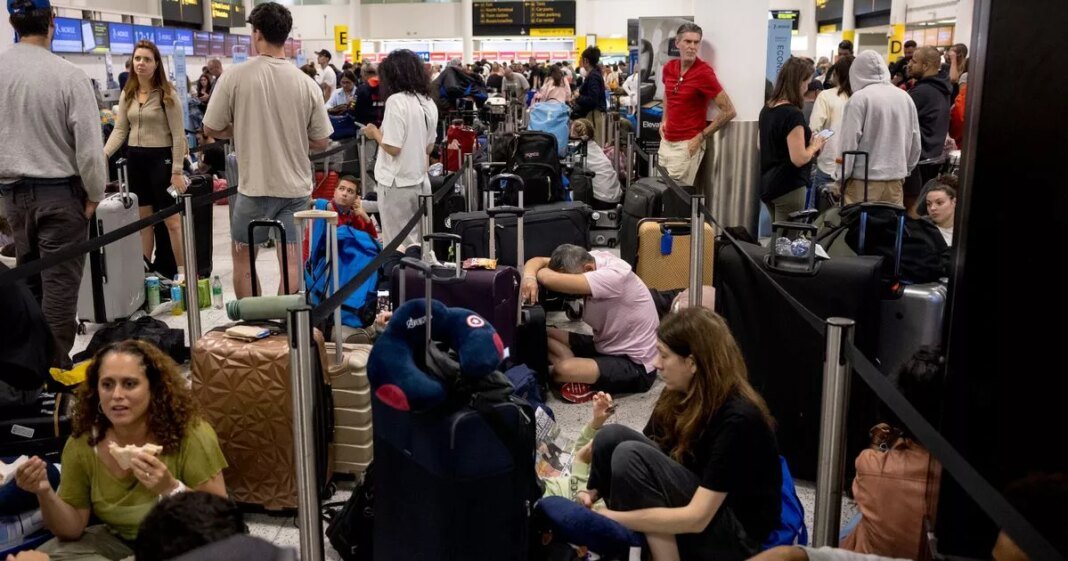A recent analysis has unveiled the airlines with the highest delays as industry standards continue to decline. The Civil Aviation Authority (CAA) data indicates a significant decrease in on-time departures within 15 minutes of the scheduled time for major airlines operating in UK airspace, attributed to various factors such as increased flight volume, airspace limitations due to military conflicts, and challenges with air traffic control (ATC) staffing.
Research by Which? focused on departure data from six major airlines including British Airways, easyJet, Jet2, Ryanair, Tui, and Wizz Air between May 2024 and April 2025. The findings showed a decrease in punctuality for all airlines compared to pre-pandemic levels in 2019.
Among the analyzed airlines, Tui ranked the lowest in punctuality, with only 59.2% of departures on time in 2024–25, down from 67.2% in 2019. Wizz Air followed as the second-worst performer, with a notable drop in on-time departures from 66.8% in 2019 to 55.6% in 2023, improving slightly to 66% in 2024–25.
Ryanair, easyJet, Jet2, and British Airways also experienced declines in punctuality during the same period. Airlines have attributed some delays to air traffic control issues, with Ryanair launching a campaign highlighting ATC-related problems.
Eurocontrol reported a shortage of ATC officers in certain regions, contributing to delays. Despite efforts to enhance punctuality, airlines are facing challenges due to airspace closures, increased air traffic, and airport capacity constraints.
While flight delays persist, airlines are operating more flights than before. For instance, Ryanair and Wizz Air increased their flight schedules in 2024 compared to 2019. The airlines emphasize their commitment to minimizing disruptions and ensuring passengers reach their destinations efficiently.
Efforts to improve punctuality are ongoing, with airlines investing in operational resilience and customer service enhancements. While progress has been made, there is acknowledgment of the need for further improvements to deliver superior service and minimize disruptions for passengers.

